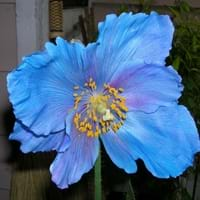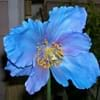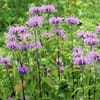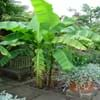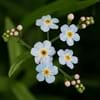Life Span
Perennial
Perennial
Type
Perennial
Bulb or Corm or Tuber
Origin
Western Europe, Southern Asia
South America, Argentina
Types
Not available
Not Available
Habitat
Shady Edge, Woodland Garden Dappled Shade
Temperate Regions
USDA Hardiness Zone
Not Available
5-9
Sunset Zone
Not Available
21,22
Habit
Clump-Forming
Clump-Forming
Flower Color
White, Yellow, Red, Blue, Orange, Pink, Rose
Light Blue, Light Purple, Silver, Sky Blue
Flower Color Modifier
Bicolor
Bicolor
Fruit Color
Green, Tan
Not Available
Leaf Color in Spring
Green, Blue Green
Green, Light Green, Gray Green
Leaf Color in Summer
Green, Blue Green
Light Green
Leaf Color in Fall
Green, Blue Green
Several shades of Green
Leaf Color in Winter
Light Green
Light Green
Leaf Shape
Rosette
Grass like
Plant Season
Summer
Spring
Sunlight
Partial Sun, Partial shade
Full Sun, Partial Sun, Partial shade
Growth Rate
Medium
Medium
Type of Soil
Loam
Clay, Loam, Sand
The pH of Soil
Acidic, Neutral
Acidic, Neutral, Alkaline
Soil Drainage
Well drained
Well drained
Bloom Time
Summer
Early Spring, Spring, Late Winter
Tolerances
Drought
Drought
Where to Plant?
Container, Ground, Pot
Container, Ground
How to Plant?
Divison, Seedlings
By dividing rhizomes, tubers
Plant Maintenance
Medium
Medium
Watering Requirements
Requires regular watering, Use and maintain water-efficient soaker hoses
Average Water Needs, Do Not over Water, Requires regular watering
In Summer
Lots of watering
Lots of watering
In Spring
Moderate
Moderate
In Winter
Average Water
Average Water
Soil pH
Acidic, Neutral
Acidic, Neutral, Alkaline
Soil Type
Loam
Clay, Loam, Sand
Soil Drainage Capacity
Well drained
Well drained
Sun Exposure
Partial Sun, Partial shade
Full Sun, Partial Sun, Partial shade
Pruning
Remove damaged leaves, Remove dead branches, Remove dead leaves
Remove damaged leaves, Remove dead branches, Remove dead leaves
Fertilizers
All-Purpose Liquid Fertilizer
All-Purpose Liquid Fertilizer
Pests and Diseases
Red blotch
Slugs, Snails
Plant Tolerance
Drought
Drought
Flower Petal Number
Single
Single
Foliage Texture
Not Available
Medium
Foliage Sheen
Not Available
Matte
Attracts
Butterflies, Flying insects
Bees, Birds, Hummingbirds
Allergy
Not Available
Not Available
Aesthetic Uses
Beautification, Bouquets, Cottage Garden, Hanging Basket, Used for decorating walls, fences, gates, hedges, etc., Woodland margins
Showy Purposes
Beauty Benefits
Not Available
Not Available
Environmental Uses
Air purification, Erosion control, Food for birds, Food for insects
Air purification
Medicinal Uses
Not Available
No Medicinal Use
Part of Plant Used
Flowers, Pods
Flowers
Other Uses
Animal Feed, Beneficial species for attracting pollinators, Decoration Purposes, Oil is used in perfume, soaps, creams, etc.
Not Available
Used As Indoor Plant
Sometimes
Yes
Used As Outdoor Plant
Yes
Yes
Garden Design
Feature Plant, Mixed Border
Container, Lawns and Turf, Mixed Border, Rock Garden / Wall, Wildflower
Botanical Name
Meconopsis grandis
Ipheion uniflorum
Common Name
Himalayan blue poppy
Spring Starflower, Springstar
In Hindi
Meconopsis grandis
Spring Starflower
In German
Meconopsis grandis
Frühling Borretsch
In French
Meconopsis grandis
Spring Starflower
In Spanish
Meconopsis grandis
primavera Flor de estrella
In Greek
Meconopsis grandis
άνοιξη starflower
In Portuguese
Meconopsis grandis
primavera Starflower
In Polish
Meconopsis grandis
Wiosna Starflower
In Latin
Grandis Meconopsis
Spring Starflower
Phylum
Streptophyta
Magnoliophyta
Class
Magnoliopsida
Lilopsida
Order
Ranunculales
Asparagales
Family
Papaveraceae
Liliaceae
Clade
Angiosperms, Eudicots
Angiosperms, Monocots
Tribe
Papavereae
Gilliesieae
Subfamily
Paperveroideae
Allioideae
Number of Species
Not Available
Importance of Blue poppy and Spring Starflower
Want to have the most appropriate plant for your garden? You might want to know the importance of Blue poppy and Spring Starflower. Basically, these two plants vary in many aspects. Compare Blue poppy and Spring Starflower as they differ in many characteristics such as their life, care, benefits, facts, etc. Every gardener must at least have the slightest clue about the plants he wants to plant in his garden. Compare their benefits, which differ in many ways like facts and uses. The medicinal use of Blue poppy is Not Available whereas of Spring Starflower is No Medicinal Use. Blue poppy has beauty benefits as follows: Not Available while Spring Starflower has beauty benefits as follows: Not Available.
Compare Facts of Blue poppy vs Spring Starflower
How to choose the best garden plant for your garden depending upon its facts? Here garden plant comparison will help you to solve this query. Compare the facts of Blue poppy vs Spring Starflower and know which one to choose. As garden plants have benefits and other uses, allergy is also a major drawback of plants for some people. Allergic reactions of Blue poppy are Not Available whereas of Spring Starflower have Not Available respectively. Having a fruit bearing plant in your garden can be a plus point of your garden. Blue poppy has no showy fruits and Spring Starflower has no showy fruits. Also Blue poppy is flowering and Spring Starflower is not flowering . You can compare Blue poppy and Spring Starflower facts and facts of other plants too.
